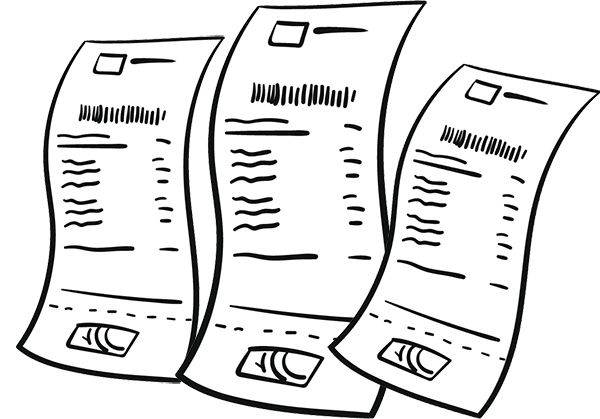It has an approximate width of 7.5 cm. Its length is variable according to your budget, your needs and how prone you are to engaging in a shopping frenzy. It consists of thermal paper - text appears when it's exposed to heat.
Recently, its color has changed from white to blue, the hallmark of eco-friendliness.
The abbreviations and numbers that comprise each line are difficult to decipher.
On average, consumers receives about 2 to 3 of them per week.
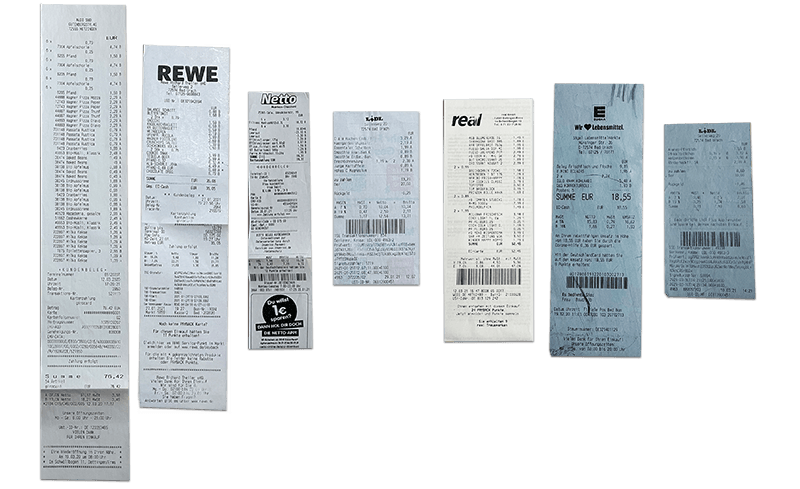
Like it or not, receipts are everywhere.
So, since they're a part of your life, what should you do with them? Could there be a way to make use of your supermarket receipts?
Some people prefer to stash their receipts in a box, a drawer, or in their pocket -if only for a little while. Others throw them away immediately after paying the cashier.
There are also customers who throw them away immediately after paying at the cashier. Some take the receipt from the cashier but refuse to throw it away until he or she is out of sight. Hence, the receipt will first land at the bottom of their bag, purse, jacket or pant’s pockets or even in their wallet.
Back home, the receipt will inevitably reach the trash can. Some receipts will have a longer lifespan, as they will be thrown away on a big house cleaning day.
In short, receipts’ last fatal destination will be the paper trash.
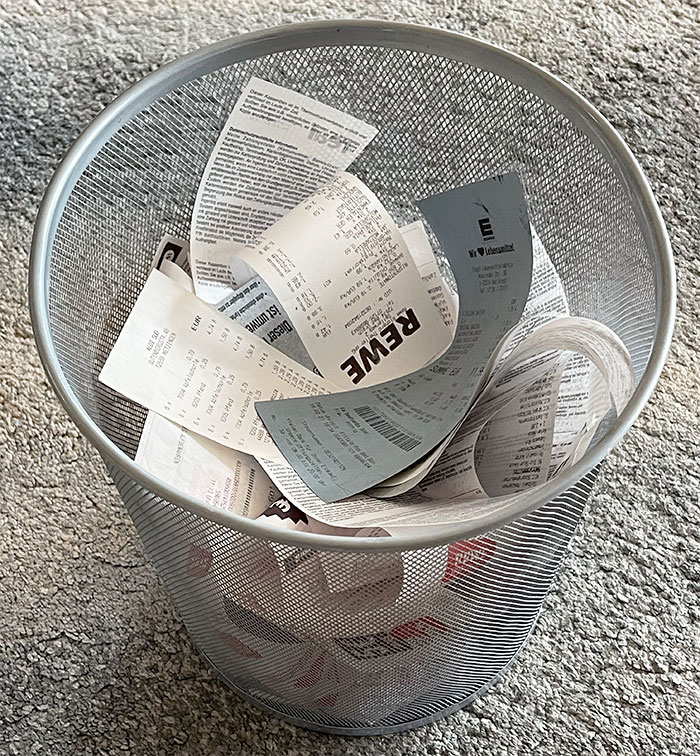
So what are receipts good for?
A receipt is the proof of purchase for refund or exchange.
In France and according to the last anti-waste law, it is forbidden to systematically print it for purchases under 20 Euro. However, if the customer asks for it, the supermarket is obliged to print one.
In Germany, the receipt is mandatory, regardless of the amount of the purchase.
The latest fashionable solution to solve the paper waste problem is to change the receipt’s format. Tremendous efforts are being made to digitalize it or to dematerialize it. In other words, it's being made available online and accessible on your Smart Phone. Many applications have recently arrived on the market, giving users the possibility to archive their receipts and manage their finances.
On the grocery-shopping side, almost all supermarkets offer an app, in which the receipts are sent and saved on your account when checking out your items at the cashier. A simple scan of your personal QR-Code (i.e. your virtual loyalty card stored on your app) will do the trick. You will even be notified via E-Mail a few minutes or even seconds after your purchase - letting you know that your receipt is now available to download. You can have peace of mind. Your receipt is now archived and you've saved ink and paper.
However, this solution has a noticeable disadvantage. The user is indeed forced to download each application of each supermarket where he or she goes grocery shopping.
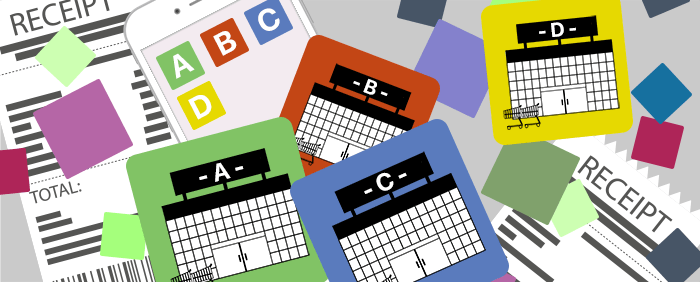
Therefore, receipt archiving is decentralized, using several accounts, opened on different platforms.
Finally, you will have to accept the terms of use and the privacy policy in order to receive your digitalized receipts, thereby also accepting the tracking and analysis of your purchases by the supermarket.
What’s behind the maneuver?
It is to provide you with personalized offers, based on your purchase history. Voilà! You will receive personalized ads, coupons and the supermarket will know a little more about you and your consumption habits.
Eco-conscious or eco-lucrative?
Of course, this is a mere marketing strategy to attract customers.
So what is the alternative for the consumers?
Could they use their receipts in the long term and make them profitable?
Could they also use THEIR data for THEIR own benefit?
Imagine all your supermarket receipts from the last five years. You could certainly define your food profile by analyzing this data. How is the saying again? "Tell me what you eat, I'll tell you who you are".
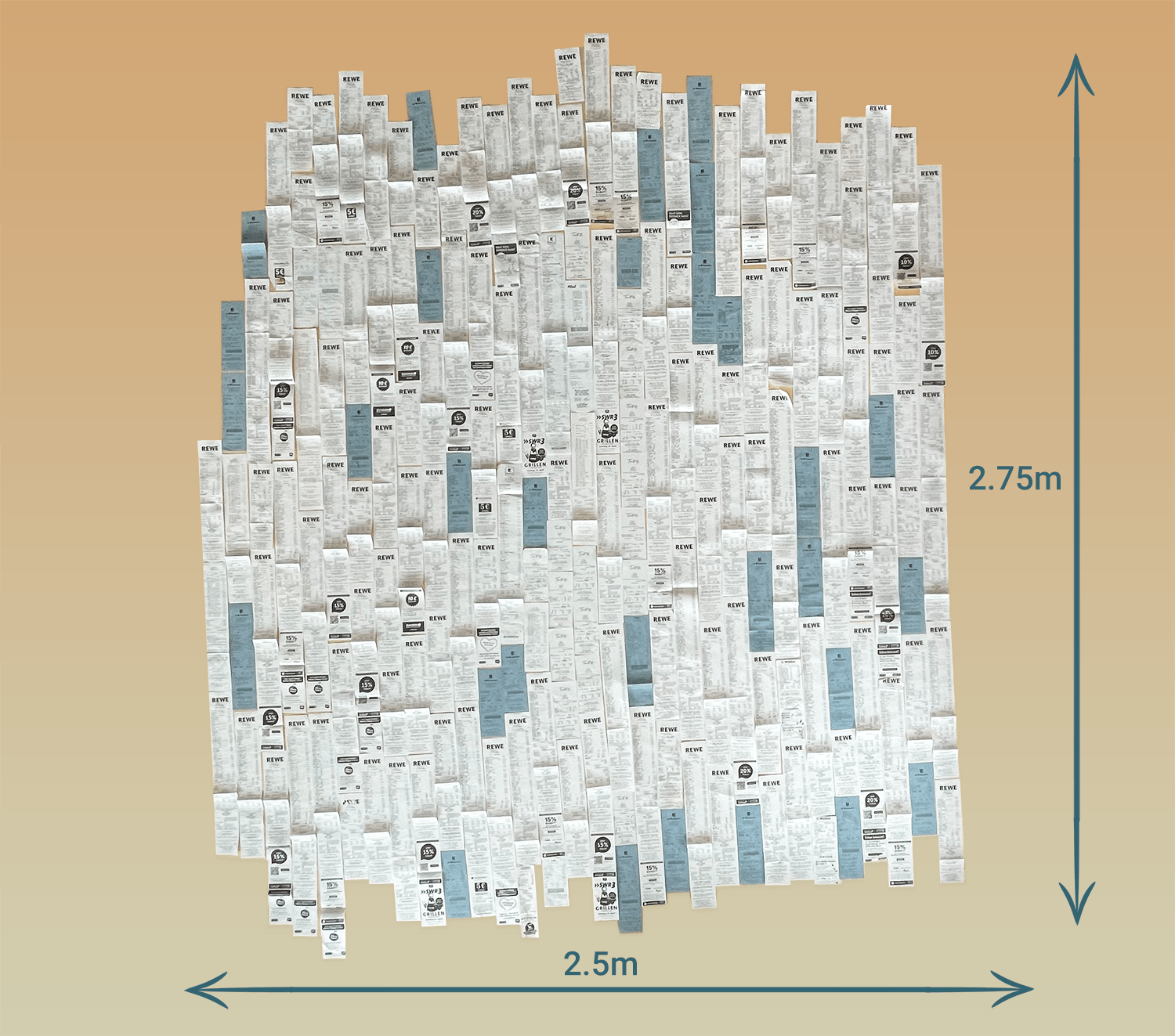
The receipt represents an interesting source of information on consumers’ nutrition. If we analyzed a receipt, we would then obtain, for example, the number of consumed calories by a couple or the percentage of consumed proteins per person in a family of 4 or the total of ingested sugar by your children in a given timeframe.
Now, if you were to analyze ALL your receipts, that is a wealth of information that you would harvest. Actually, think about the impact of this type of information on a medical diagnosis.
Maybe you would finally track the responsible food for your digestive problems, allergies or intolerances?
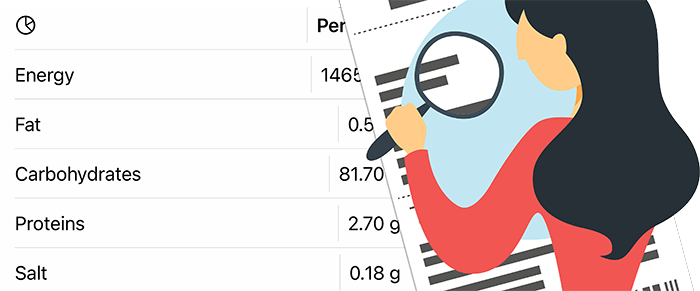
This small piece of paper, whether printed or digitalized, supplies the consumer with another type of information.
Our repetitive supermarket purchases could be converted into complex statistics from which we could calculate food inventory probabilities.
If you were to gather all your receipts, they would represent a crystal ball, mirroring your food inventory or at least a very close approximation of what’s left in your food pantry.
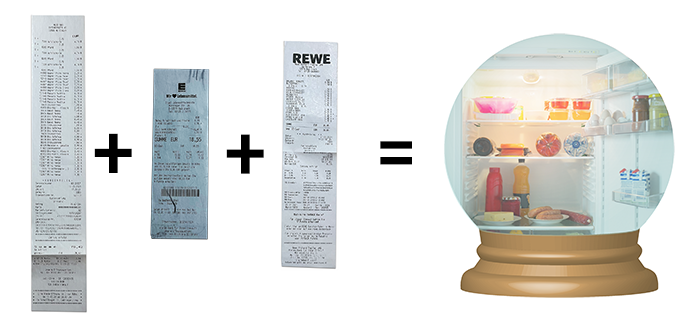
An up-to-date inventory also allows you to optimize and plan the use of food you still have left in your kitchen. From the always updated food stocks, you can easily deduce if a certain recipe will be possible for dinner or lunch.
Fridge and kitchen shelves are optimized: no more waste and long live the savings!

To sum up, our receipts are full of information about ourselves. The data is of a nutritional, organizational, financial and even ecological nature.
Wouldn’t it be great to have a personal assistant, i.e. an app, that gives you the facts and executes the boring and repetitive tasks such as writing a shopping list, controlling your fridge, making an inventory or analyzing your purchased products?
And this based on all of your supermarket receipts?
This is what the iPhone App WhatsLeft (currently available as Beta Version on TestFlight) does and daily improves.

Stay tuned for our next article with a full description of the app's features and for more details!
Any questions? Any comments? Feel free to write us using the contact form on our website, or directly by e-Mail to info@tellmewhatsleft.de.
Or if you can't wait, test the app before anyone else by clicking here.
